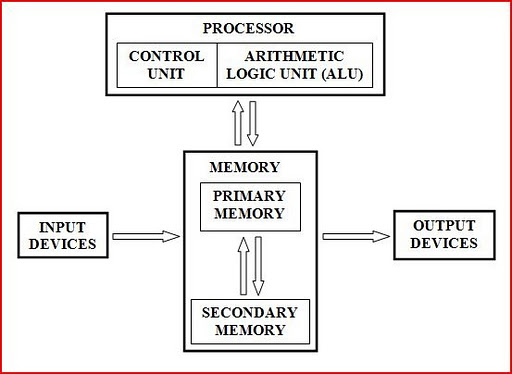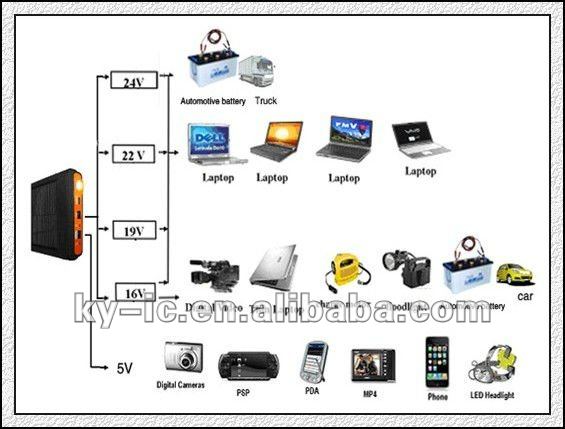Assignment from Mr. Tri Djoko Wahjono, Ir., M.Sc.
Name : Tommy Hendrawan
NIM / Class : 1701309513 / 01PCT
Assignment : Discovering Computer 2011 - Chapter 2 The Internet and World Wide Web
1. How Did the Internet Evolve?
The history of the Internet began with the development of electronic computers in the 1950s. The public was first introduced to the concepts that would lead to the Internet when a message was sent over the ARPANet from computer science Professor Leonard Kleinrock's laboratory at University of California, Los Angeles (UCLA), after the second piece of network equipment was installed at Stanford Research Institute (SRI). Packet switched networks such as ARPANET, Mark I at NPL in the UK, CYCLADES, Merit Network, Tymnet, and Telenet, were developed in the late 1960s and early 1970s using a variety of protocols. The ARPANET in particular led to the development of protocols for internetworking, in which multiple separate networks could be joined together into a network of networks.
In 1982, the Internet protocol suite (TCP/IP) was standardized, and consequently, the concept of a world-wide network of interconnected TCP/IP networks, called the Internet, was introduced. Access to the ARPANET was expanded in 1981 when the National Science Foundation (NSF) developed the Computer Science Network (CSNET) and again in 1986 when NSFNET provided access to supercomputer sites in the United States from research and education organizations. Commercial Internet service providers (ISPs) began to emerge in the late 1980s and early 1990s. The ARPANET was decommissioned in 1990. The Internet was commercialized in 1995 when NSFNET was decommissioned, removing the last restrictions on the use of the Internet to carry commercial traffic.
Since the mid-1990s, the Internet has had a revolutionary impact on culture and commerce, including the rise of near-instant communication by electronic mail, instant messaging, Voice over Internet Protocol (VoIP) "phone calls", two-way interactive video calls, and the World Wide Web with its discussion forums, blogs, social networking, and online shopping sites. The research and education community continues to develop and use advanced networks such as NSF's very high speed Backbone Network Service (vBNS), Internet2, and National LambdaRail. Increasing amounts of data are transmitted at higher and higher speeds over fiber optic networks operating at 1-Gbit/s, 10-Gbit/s, or more. The Internet's takeover over the global communication landscape was almost instant in historical terms: it only communicated 1% of the information flowing through two-way telecommunications networks in the year 1993, already 51% by 2000, and more than 97% of the telecommunicated information by 2007.Today the Internet continues to grow, driven by ever greater amounts of online information, commerce, entertainment, and social networking.
2. What Are the Various Types of Internet Connections, and What Are the Differences between Broadband and Dial-Up Connections?
Many home and small business users opt to connect to the Internet via high-speed broadband Internet connections.
- DSL (digital subscriber line) provides Internet connections using regular copper telephone lines. Cable Internet service provides high-speed Internet access through the cable television network via a cable modem.
- Fiber to the Premises (FTTP) uses fiber-optic cable to provide high-speed Internet access.
- Fixed wireless provides high-speed Internet connections using a dish-shaped antenna to communicate via radio signals.
- A cellular radio network offers high-speed Internet connections to devices with built-in compatible technology or computers with wireless modems. A Wi-Fi network uses radio signals.
- Satellite Internet service provides high-speed Internet connections via satellite.
- Some homes and small businesses connect to the Internet with dial-up access. Dial-up access, which is slower-speed technology, takes place when the modem in your computer connects to the Internet via a standard telephone line that transmits data and information using an analog (continuous wave) pattern.
3. What Are the Types of Internet Access Providers?
An access provider is a business that provides access to the Internet free or for a fee. An ISP (Internet service provider) is a regional or national access provider. An online service provider (OSP) provides Internet access in addition to members-only features. A wireless Internet service provider provides wireless Internet access to desktop and notebook computers and mobile devices with built-in wireless capabilities (such as Wi-Fi) or to computers using wireless modems or wireless access devices.
4. What Is the Purpose of an IP Address, and What Is Its Relationship to a Domain Name?
An IP address (Internet Protocol address) is a number that uniquely identify each computer or device connected to the Internet. The Internet relies on IP addresses to send data to computers at specific locations. The IP address usually consists of four groups of numbers, each separated by a period. A domain name is the text version of an IP address.
5. What Is the Purpose of a Web Browser, and What Are the Components of a Web Address?
A Web browser, or browser, is application software that allows users to access and view Web pages or access Web 2.0 programs. With an Internet connection established, you start a Web browser, which then retrieves and displays a starting Web page, sometimes called a home page. The home page usually contains links to other Web pages. A link, short for hyperlink, is a built-in connection to another related Web page or part of a Web page. A Web page has a unique address called a URL (Uniform Resource Locator), or Web address. A Web address consists of a protocol, a domain name, and sometimes the path to a specific Web page or location on a Web page.
6. How Do You Use a Search Engine to Search for Information on the Web, and What Is the Difference between a Search Engine and a Subject Directory?
A search engine is a program that finds Web sites, Web pages, images, videos, news, maps, and other information related to a specific topic. To use a search engine, you enter a word or phrase, called search text or a search query that describes the item you want to find. Each word in the search text is known as a keyword. The search engine displays a list of hits. When clicked, each hit subject set of categories links, you to display pages about desired topic. Displays an associated Web site or Web page. A directory classifies Web pages in an organized categories and related subcategories. By clicking u move through levels to display a list of Web out a topic.
7. What Are the Types of Web Sites?
A portal is a Website that offers a variety of Internet services from a single location. A news Web site contains newsworthy material. An informational Web site contains factual information. A business/marketing Web site promotes or sells products or services. A blog, short for Weblog, is an informal Web site consisting of time-stamped articles, or posts, in a diary or journal format, usually listed in reverse chronological order. A wiki is a collaborative Web site that allows users to create, add to, modify, or delete the Web site content via their Web browser. An online social network, or social networking Web site, encourages members to share their interests, ideas, stories, photos, music, and videos with other registered users. An educational Web site offers avenues for teaching and learning. An entertainment Web site provides an interactive and engaging environment. An advocacy Web site describes a cause, opinion, or idea. A Web application, or Web app, is a Web site that allows users to access and interact with software through a Web browser or any computer or device connected to the Internet. A content aggregator is a business that gathers and organizes Web content and then distributes, or feeds, the content to subscribers for free or a fee. A personal Web site is maintained by a private individual or family.
8. How Do Web Pages Use Graphics, Animation, Audio, Video, Virtual Reality, and Plug-Ins?
Some Web pages use multimedia, which combines text with graphics, animation, audio, video, and/or virtual reality. A graphic is a digital representation of non-text information such as a drawing, chart, or photo. Animation is the appearance of motion created by displaying a series of still images in sequence. Audio includes music, speech, or any other sound. Video consists of full-motion images played back at various speeds. Virtual reality (VR) is the use of computers to simulate an environment that appears as three-dimensional space. A plug-in, or add-on, is a program that extends a browser’s capability to display multimedia elements.
9. What Are the Steps Required for Web Publishing?
Web publishing is the development and maintenance of Web pages. The five major steps to Web publishing are:
(1) plan a Web site,
(2) analyze and design a Web site,
(3) create a Web site,
(4) deploy a Web site, and
(5) maintain a Web site.
10. What Are the Types of E-Commerce?
E-commerce, short for electronic commerce, is a business transaction that occurs over an electronic network such as the Internet. Business-to-consumer (B2C) e-commerce consists of the sale of goods and services to the general public. Consumer to consumer (C2C) e-commerce occurs when one consumer sells directly to another, such as in an online auction. Business-to-business (B2B) e-commerce takes place between businesses that exchange goods and services.
11. How Do E-Mail, Mailing Lists, Instant Messaging, Chat Rooms, VoIP, Newsgroups and Message Boards, and FTP Work?
E-mail (short for electronic mail) is the transmission of messages and files via a computer network. A mailing list is a group of e-mail names and addresses given a single name, so that everyone on the list receives a message sent to the list. Instant messaging (IM) is a real-time Internet communications service that notifies you when one or more people are online. A chat room is a location on an Internet server that permits users to conduct real-time typed conversations. VoIP (Voice over IP, or Internet Protocol), also called Internet telephony, enables users to speak to other users over the Internet, instead of the public switched telephone network. A newsgroup is an online area in which users have written discussions about a particular subject. A message board is a Web-based type of discussion group that is easier to use than a newsgroup. FTP (File Transfer Protocol) is an Internet standard that permits file uploading and downloading with other computers on the Internet.
12. What Are the Rules of Netiquette?
Netiquette, which is short for Internet etiquette, is the code of acceptable behaviors users should follow while on the Internet. Netiquette rules include: keep messages short, be polite, avoid sending flames or spam, use emoticons and acronyms, clearly identify a spoiler, read the FAQ, do not assume material is accurate or up-to-date, and never read someone’s private e-mail.



















